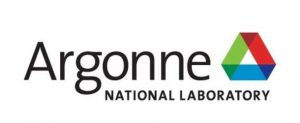Quantum News Briefs October 18: Argonne to receive new funding to develop quantum networks; Polariqb receives $300,000 from DARPA’s Imagining Practical Applications for a Quantum Tomorrow; Vector Atomic delivers navigation sensor using atomic clock exploiting quantum properties of atoms + MORE

Quantum News Briefs October 18:
Argonne to receive new funding to develop quantum networks
 The U.S. Department of Energy (DOE) has announced that three collaborative projects in quantum networking will receive $24 million for up to three years. The DOE’s Argonne National Laboratory will be participating in two of the projects and leading one of them, InterQnet. Anticipated funding for InterQnet is $9 million over three years.
The U.S. Department of Energy (DOE) has announced that three collaborative projects in quantum networking will receive $24 million for up to three years. The DOE’s Argonne National Laboratory will be participating in two of the projects and leading one of them, InterQnet. Anticipated funding for InterQnet is $9 million over three years.
The InterQnet project will address multiple challenges with scaling up quantum networks from the current metropolitan scale to much longer distances and more complex architectures. To that end, Argonne is collaborating with DOE’s Fermi National Accelerator Laboratory (Fermilab), Northwestern University, the University of Chicago and the University of Illinois Urbana-Champaign.
InterQnet will be showcasing quantum communication across five buildings on the Argonne campus with multiple distinct quantum platforms and an early-stage quantum repeater. Each platform will use a different type of quantum bit (qubit), the basic unit of information in quantum information. Unlike classical bits, which can only be either 0 or 1, a qubit can simultaneously represent a combination of both states. This characteristic is one reason quantum computers possess vastly superior computational capabilities for some applications.
Argonne researchers previously collaborated in the development of four types of qubits: electrons, ytterbium atoms, charged erbium atoms (ions) and microwave circuits. A significant milestone would be to demonstrate the Argonne quantum network connecting these distinct qubit platforms. One of them would serve as a quantum repeater, an essential network element to extend the communication distance.
InterQnet will also leverage various existing QIS hardware and software elements already in place. These include the fiber-optics connection between Argonne and partner institutions and a quantum network simulator developed at Argonne. Click here to read the announcement in-entirety.
Polariqb receives $300,000 from DARPA’s Imagining Practical Applications for a Quantum Tomorrow
 Polarisqb, has received an award for a project with the Defense Advanced Research Projects Agency, DARPA, worth up to $300,000 according to Zac Ezzone of BizJournals.
Polarisqb, has received an award for a project with the Defense Advanced Research Projects Agency, DARPA, worth up to $300,000 according to Zac Ezzone of BizJournals.
This award came through the agency’s Imagining Practical Applications for a Quantum Tomorrow program, which is aimed at exploring “novel algorithms and applications that can leverage practical quantum systems that are expected to be demonstrated within the next several years,” according to program documents.
For Polaris, a small company of about 10 employees, it’s an opportunity to continue developing its technology, said CEO Shahar Keinan. Importantly,the award also gives the company validation that could help Polaris reach potential customers.”It gives us credibility on the codes … and the technology that we develop that somebody else looked at it and said, ‘This is good enough and they are doing good,'” Keinan said.
This project with DARPA, part of the U.S. Department of Defense, runs for a year. During that time, Polaris has to provide the federal agency with monthly status reports and attend quarterly meetings. Keinan said DARPA didn’t hand over a check upfront, but will instead provide payments to the company based on its success as the project progresses. The total award value is limited to a maximum of $300,000.
Polaris earlier this year began offering a subscription-based platform, called Quantum-Aided Drug Design, or QuADD, that, the company says can quickly identify a library of top candidate molecules for drug targets. This is where the company is focusing much of its efforts. This platform can generate repeating incoming and puts position Polaris in position to work with larger companies on multiple projects per year. Click here to read the article on BizJournals.
Vector Atomic delivers navigation sensor using atomic clock exploiting quantum properties of atoms
 Vector Atomic, a California-based startup, worked with Honeywell Aerospace to produce a cutting-edge navigation sensor that uses an atomic clock to take precise measurements without relying on GPS. Quantum News Briefs summarizes.
Vector Atomic, a California-based startup, worked with Honeywell Aerospace to produce a cutting-edge navigation sensor that uses an atomic clock to take precise measurements without relying on GPS. Quantum News Briefs summarizes.
The atomic sensor, funded by the Pentagon’s Defense Innovation Unit, was delivered in August and is awaiting a ride to space, according to Vector Atomic’s CEO Jamil Abo-Shaeer. The company in 2020 was selected by DIU to build an atomic sensor — a device that exploits the quantum properties of atoms to make very precise measurements — that could survive the rigors of space.
The recent delivery of the quantum sensor marks a “compelling milestone for the quantum sensing community,” Abo-Shaeer told SpaceNews. “Atomic clocks have been flying on GPS for a long time, but other than atomic clocks, other forms of quantum sensing have not materialized outside the lab.”
Abo-Shaeer, a former project manager at DARPA, co-founded Vector Atomic in 2018 with the goal of fielding and commercializing atomic instruments. Quantum sensors that use atomic clocks improve accuracy and don’t drift over time like conventional systems, which makes them desirable for military applications, said Abo-Shaeer. “They come calibrated out of the box and they stay calibrated,” he said. “The atomic systems will drift as well but you can navigate longer. They’re not doing anything fundamentally different from current technology. They’re just potentially doing it better.”
Abo-Shaeer said Vector Atomic has no venture capital funding. After winning the DIU contract that provided about $10 million in government funds, the company partnered with Honeywell to build an atomic inertial navigation sensor, qualify it for space flight and integrate it with a satellite bus.
Atomic sensors that use atomic clocks are more precise but they’ve only been tested in laboratories and are very fragile, he said. DIU’s project is about figuring out if these devices can be made robust enough for deployment in real-world systems. Click here to read the Space News article in-entirety.
Unisys debuts quantum-powered solution that tackles complex logistics optimization challenges
Unisys has unveiled Unisys Logistics Optimization™, a new quantum-powered solution designed to help organizations solve complex logistics optimization challenges in seconds. Quantum News Briefs summarizes the announcement.
As logistics costs continue to rise, companies are urgently trying to redefine the shipping process to improve the customer experience, decrease their costs and drive additional incremental revenue. This is where Unisys Logistics Optimization™ steps in. Populated with industry-specific insights, the solution leverages a combination of quantum computing, advanced analytics and artificial intelligence (AI) to drive business outcomes.The company will debut Unisys Logistics Optimization™ during a virtual launch event on October 17, 2023
Unisys Logistics Optimization™ uses pre-trained models to generate answers to complex queries in seconds. This represents a substantial leap forward, as this rapid turnaround was not possible previously. Traditional computational tools would require years to collect and learn from operational data to produce similar results. The solution provides logistics companies, such as air cargo carriers, with an optimal plan for packing, storing and routing shipments across multiple vehicles more efficiently and cost-effectively.
Piloting the new solution in pursuit of its next breakthrough in logistics optimization is Malaysia Aviation Group’s (MAG) cargo arm, MAB Kargo Sdn Bhd (MASkargo), which serves nearly 100 destinations worldwide.
Unisys Logistics Optimization™ is built for air cargo, ground handlers and freight forwarders and is designed to help logistics companies optimize in three ways: Capacity, Inventory, and Routing. Click here to read the news announcement in-entirety.
Sandra K. Helsel, Ph.D. has been researching and reporting on frontier technologies since 1990. She has her Ph.D. from the University of Arizona.



















